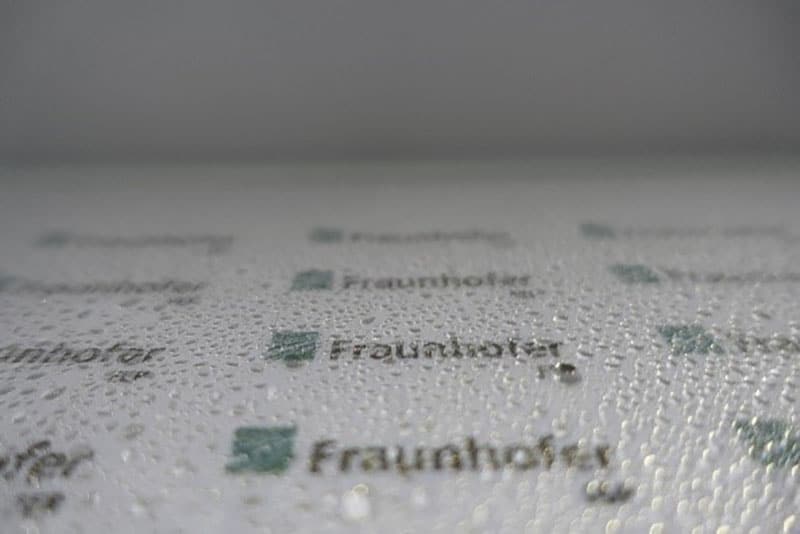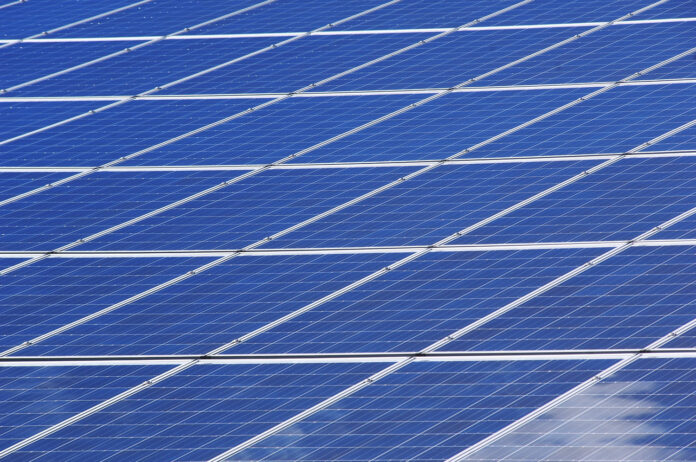Solar energy is one of the fastest-growing renewable energy technologies and is playing an increasingly important role in the global energy transformation. But the accumulation of dust on solar panels or mirrors is already a significant issue, which also reduces efficiency.
Cleaning them is an expensive and time-consuming process and also uses gallons of water. Dirt-repellent, easy-to-clean surfaces ensure transparency and cleanliness for facades and more efficient and consistent energy production for solar modules, with less maintenance costs.
Engineers at Germany’s Fraunhofer Institute for Organic Electronics, Electron Beam, and Plasma Technology FEP have developed an ultra-thin, dirt-repellent coating for solar panels that can make them self-cleaning. They applied crystalline titanium oxide to ultra-thin glass using a roll-to-roll process, thus achieving hydrophobic surfaces that become super-hydrophilic under UV light.
Researchers say titanium dioxide is a material that is hydrophobic (repels water) when it is not exposed to ultraviolet (UV) radiation and super-hydrophilic (becomes highly water-attracting) when radiated. In the case of photoinduced hydrophilicity, the surface changes from hydrophobic to super-hydrophilic after approximately 30 minutes of irradiation with sun-like UV light.

When traffic dust, sand, or other dirt deposits on glass facades or solar panels with such a titanium dioxide coating, it is washed off by the nightly hydrophobicity of the surface via beading raindrops. In addition, the cyclic alternation of hydrophobic and super-hydrophilic properties means that the dirt does not adhere to the surface during the day.
Morever, when the titanium oxide is activated with UV light, it decomposes organic molecules on the surface by photocatalysis. This produces antibacterial and sterile surfaces that are of particular interest in medical technology or in connection with flexible displays.
“We are focusing on photoinduced hydrophilicity on surfaces here,” explains graduate student Valentin Heiser from Fraunhofer FEP. “To upscale this effect, we apply crystalline titanium oxide to ultrathin glass in a roll-to-roll process for the first time. This is very efficient. The ultrathin and lightweight glass can be applied subsequently to facades or directly incorporated into solar modules as a composite material – and even onto curved surfaces.”
The researchers fabricated the first coatings – a 30 cm wide and 20 m long roll of thin glass, with a glass thickness of 100 micrometers, was coated with 30 -150 nanometers of titanium oxide in a roll-to-roll system. This pilot plant for roll-to-roll coating of thin glass is located at Fraunhofer FEP.
Fraunhofer FEP scientists are now working on combining the properties of titanium dioxide and thin glass in an optimal and cost-efficient way in order to bring innovative products to market together with the industry. They are also working on investigating the possibility of using polymer films instead. In the future, the team also plans to work on layer systems that can be activated not only with UV light but also with visible light.
